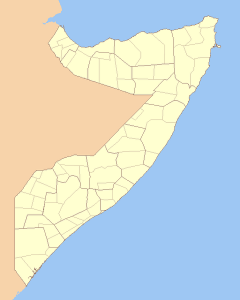 For the first time in over twenty years, Somalia’s National Constituent Assembly (NCA) convened on July 25, charged with with crafting a new constitution to go into effect upon the expiration of the Transitional Federal Government’s (TFG) mandate on August 20, 2012.
For the first time in over twenty years, Somalia’s National Constituent Assembly (NCA) convened on July 25, charged with with crafting a new constitution to go into effect upon the expiration of the Transitional Federal Government’s (TFG) mandate on August 20, 2012.
Somalia’s new political arrangement could have significant implications for the US, which has implemented an extensive counterterrorism strategy in the Horn of Africa. As a part of this strategy, the US calls on special operations forces and operates a controversial but covert drone program to mitigate the threat posed by Islamist militant groups such as Al Shabaab.
Somalia has been without a central government since the fall of Mohammed Siad Barre’s dictatorial regime in 1991. For the following sixteen years, Somalia persisted as a “failed state,” one which lacked the ability to defend its own citizens against fundamentalist Islamic militias. The absence of any viable political structure has been at the root of violent extremism and exacerbated the effects of droughts and famines frequently visited upon parts of the country.
Recognizing Somalia as a threat to regional stability, the Intergovernmental Authority on Development (IGAD) engaged in two years of mediation that led to the formation of the TFG in 2004. The TFG marked the fourteenth attempt at forming a viable government in Somalia, and in its most recent iteration, is composed of 135 clan elders arbitrarily arranged into 4.5 ruling clans.
Initially governing from Kenya due to security concerns, the TFG convened on Somali soil for the first time in 2006, and has continued to rule from Mogadishu. Supported by several UN programs – UNPOS and UNSOA – and with security assistance from the African Union Mission in Somalia (AMISOM), the TFG has proved a stable, though relatively ineffectual, political arrangement in Somalia.
The TFG’s mandate, having been renewed several times, is set to expire on August 20th. The July elections held to select the membership of the NCA were foundational to establishing a political framework to succeed the TFG. The 825-member NCA will choose a speaker and deputies by August 4th, and the new Somali President by the TFG expiration date.
The US terminated diplomatic relations with Somalia in 1991, and has since engaged in limited strategic dialogue with national actors by proxy via US Embassies in Kenya and Djibouti. Most of this engagement centers around counterterrorism efforts, which the US undertakes through anti-piracy and counterterrorism operations conducted by AFRICOM as well as more direct military channels and covert operations. Following the merge between Al Shabaab’s extensive networks and resources with Al Qaeda’s ideology and tactics, the US is increasingly concerned about the risk of terrorist attacks emanating from Somalia.
As with any shift in political frameworks, the developing transition in Somalia presents challenges and opportunities for the US in its engagement with and operations in the nation. After more than two decades, Somalia may construct a central government capable of securing its territory and building the capacity to provide for and protect its citizens. The US Government would have a Somali counterpart with which it can better coordinate strategies to combat regional violent extremism and promote development.
However, given a lack of democratic inheritance in its recent history, Somalia may struggle to overcome a trajectory that has produced political frameworks that were neither viable nor effective. The result is that the US must play a waiting game, staying the course on its current engagement strategies while carefully monitoring the NCA’s decisions over the next month.


